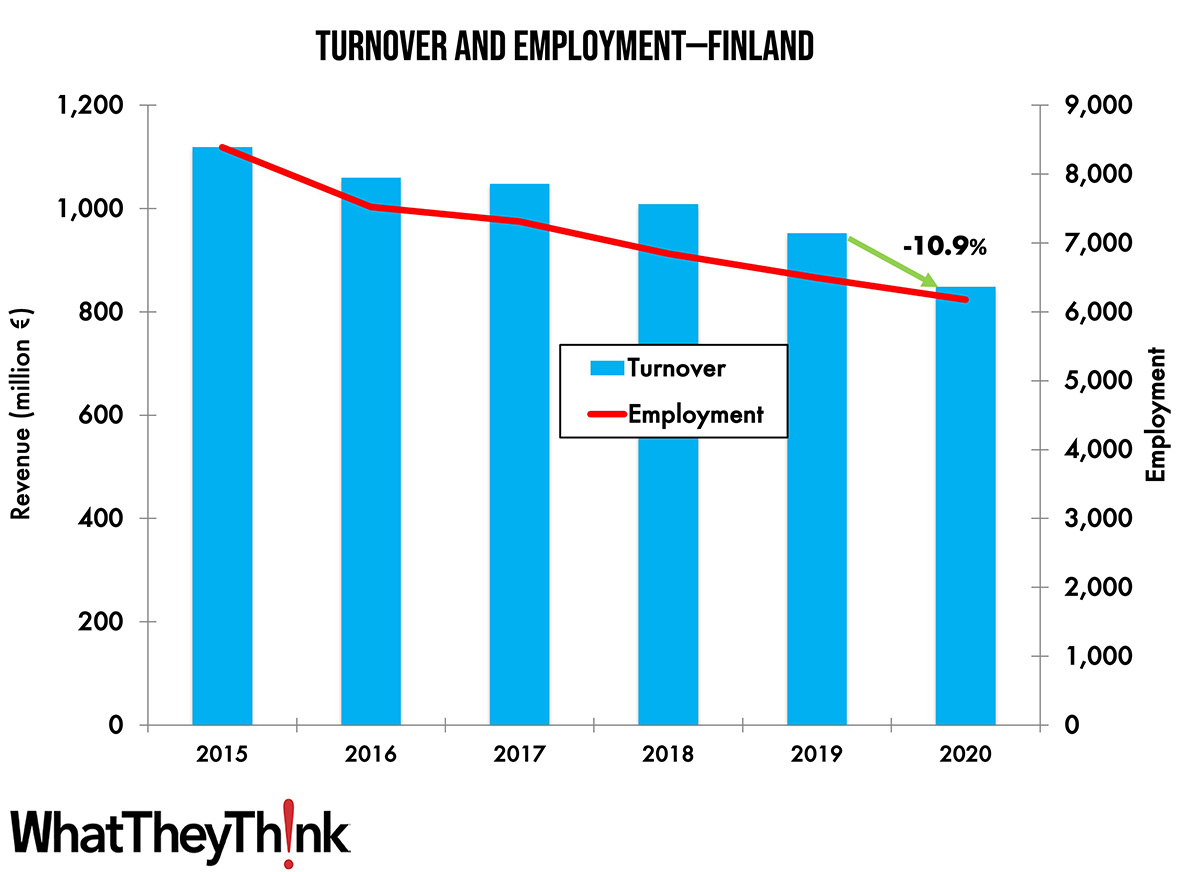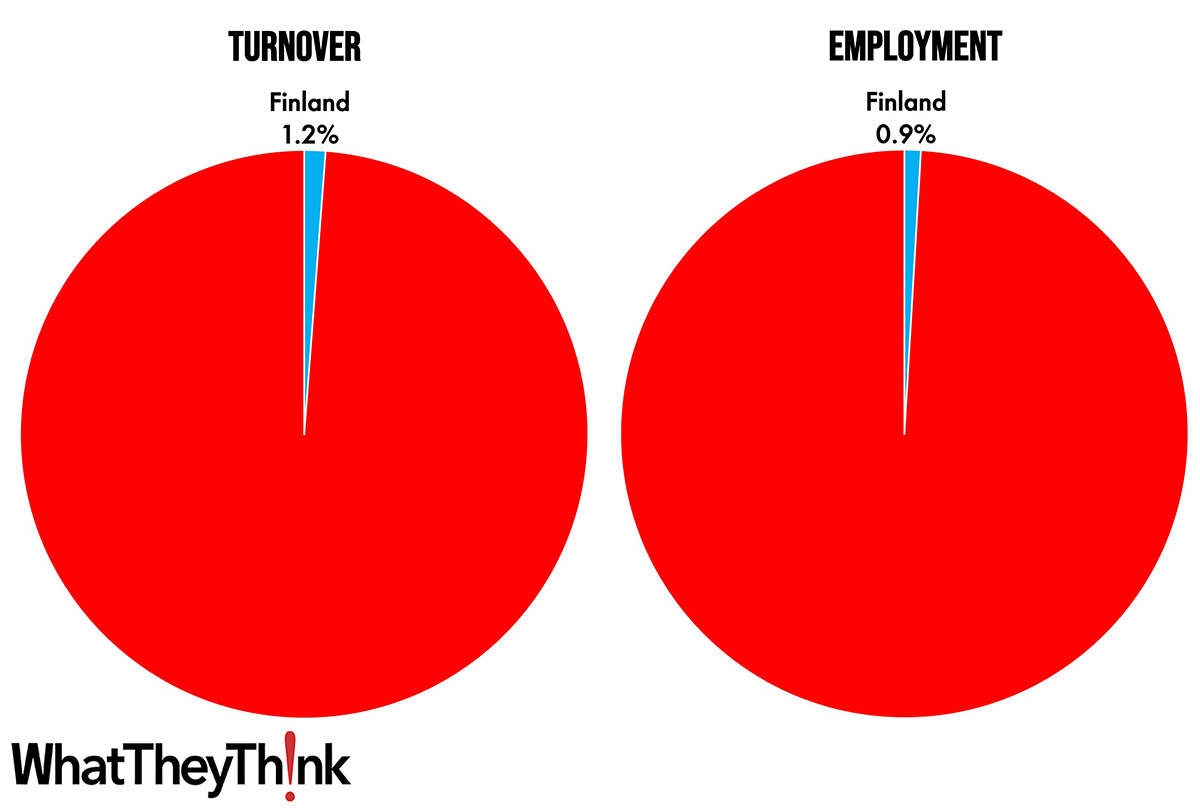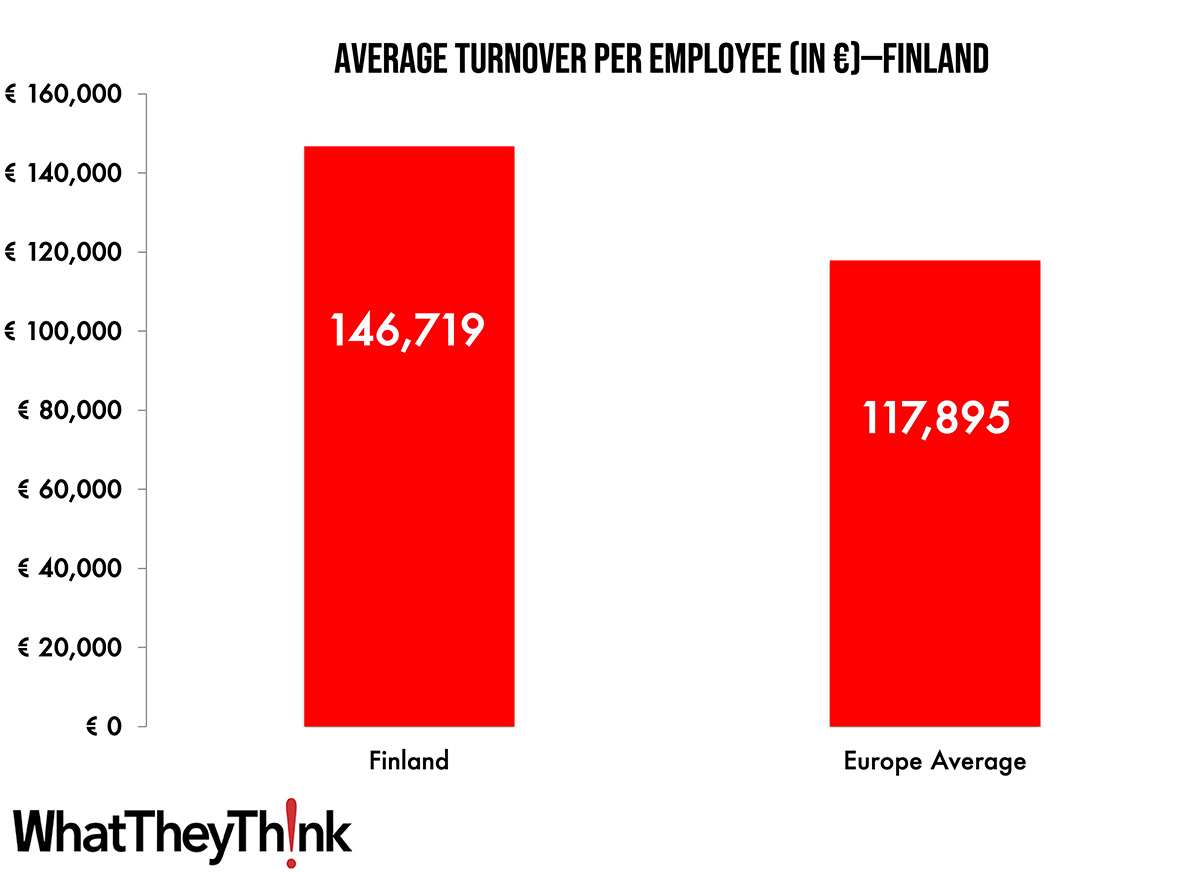The full results on turnover (revenues) in the printing industry in Europe for 2020 were published late in 2022 after index data was the only source for print volume developments during the pandemic. While the index data only allowed for volume developments, now real turnover data is available—even if the data is far from perfect.
The turnover for commercial printing in Finland has been showing some decline in recent years, although from 2016 to 2018 turnover held up relatively well. Overall, the turnover declined from €1.1 billion in 2015 to €950 million in 2019, an average annual decline of 3.2%. In 2020, turnover dropped decisively by 10.9% due to the pandemic, somewhat in the expected range based on the earlier production volume index data.
The number of persons employed showed a steady decline since 2015 with an average annual drop of 5%, a sign of constant productivity improvements. The decline remained almost the same, at 4.8% in 2020, likely an effect of governmental help buffering the immediate effects of the pandemic.

Source: Eurostat 2022 and digitalprintexpert.de
Overall, the printing industry in Finland accounted for 1.2% of the total European printing industry in 2020, falling between Hungary and Portugal. In terms of the number of employees in print, the European share of Finland is markedly lower at 0.9%, indicating a relatively efficient print industry.
Finland—Share of Turnover and Employment in Commercial Print in Europe, 2020

Source: Eurostat 2022 and digitalprintexpert.de
Based on Eurostat numbers for turnover and the number of employees in the printing industry, the average annual turnover per employee can be calculated. At €146,719 in 2019, it’s higher than the European average and in the range of most Nordic countries. The turnover does trail countries like the Netherlands, Belgium, and Austria, however. The employment number does include part-time employees and owners with a salary. The year 2019 has been chosen as a basis for the comparison as 2020 could have been impacted by the COVID-19 pandemic and the differing speeds the labour markets reacted.

Source: Eurostat 2022 and digitalprintexpert.de
Please keep in mind that the data is based on Eurostat numbers for printing and related services (complemented by some estimates), which consists mainly of commercial and publishing printing, including prepress and finishing companies. That means that packaging, data center, direct mail print, or quick print/copy shops are not included or only on a limited basis. In-house print/CRD are not included at all. Europe as used in the series of articles includes the EU countries plus Norway, Switzerland, and the UK. If you have questions about sizing the European printing industry or need clarification, please contact me at [email protected].
This series on the turnover and employment development in commercial print in Europe will continue. Next time we will have a look at the printing industry in Austria.














